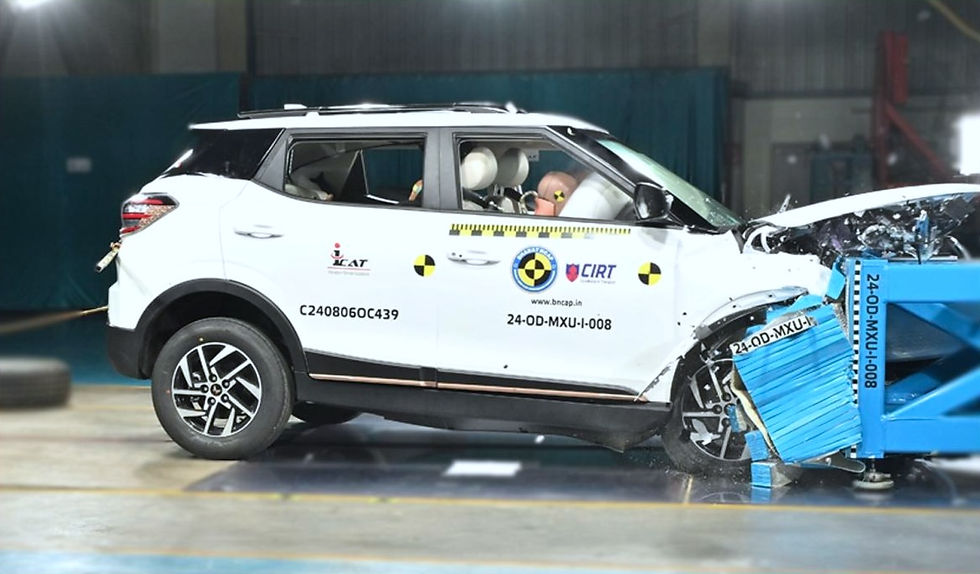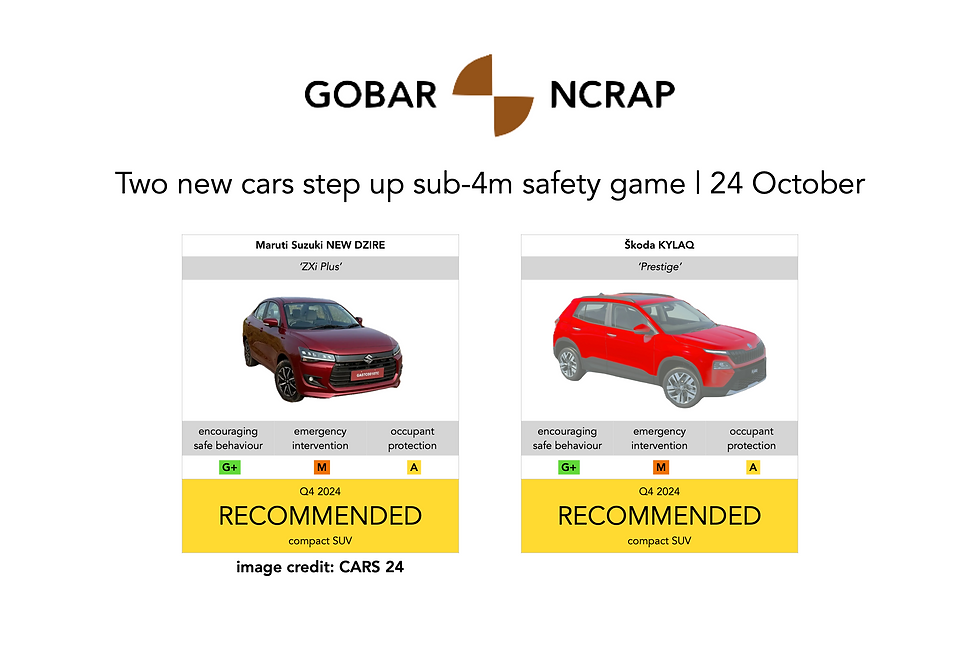Mahindra hits five-star BNCAP hat-trick
- Gobar NCRAP
- Nov 15, 2024
- 2 min read

Consumer safety testing organisation BNCAP has published safety ratings for the Mahindra XUV 3XO compact SUV, the XUV400 PRO midsize SUV, and the THAR ROXX midsize off-roader. All three have achieved the organisation's top rating: five stars for adult and child occupant protection. Detailed results are available on BNCAP's website, www.bncap.in. Since no comments have been provided, decoding the dummy visualisation is difficult.
Consumers should note that nonstandard equipment was fitted to the XUV400 PRO during the side pole test, based on an assessment of market fitment rates. The complete crash test result is useful only to judge variants of the XUV400 PRO that are fitted with side and curtain airbags.
About BNCAP crash tests
BNCAP tests cars for passive safety in five scenarios:
a moderately off-centre frontal crash into a deformable barrier representing another similar car
a side impact with a moving barrier representing a small car striking the driver's door
optionally, a side pole test where the car is propelled laterally on a sled with the driver's head targeted at a rigid pole representing a tree or roadside object
Additionally, the following is checked based on type-approval certificates submitted by the vehicle manufacturer:
electronic stability control performance in a robotised "sine-dwell" emergency steering manouevre
pedestrian head protection tests with instrumented headforms representing adult (4.5kg) and child (3.5kg) heads striking various locations on the hood and the base of the windscreen
pedestrian lower leg protection tests at various locations on the bumper, with an older, less realistic "flexPLI" impactor that does not mimic pelvis weight
In all tests, the front seat(s) carry belted dummies representing the median European adult male. In the front and side impact tests, the rear seats carry dummies representing 1.5 and 3 year-old children in child seats selected and installed as directed by the car manufacturer.
The dummy readings are translated to scores based on corresponding probability of serious/severe/critical injury to the part in empirical testing. Body parts are then also penalised if there are signs that the robustness of the dummy response has been compromised. Finally, additional points for safety features are added and qualifying extra requirements considered to generate a star rating.
Factors like speed, occupant stature and structural compatibility with crash partners can greatly affect the real-world reproducibility of test results. Other factors like geometric homogeneity of the test barriers or flaws in dummy biofidelity due to ever-expanding anthropometry research may also result in cars being over-optimised to test scenarios, often unknowingly as car manufacturers are given test requirements as a "black box" and need not be concerned with research or details about development of the tests. Dynamic child crash test results may also not be assumed to apply when child seats different from the ones used in the test are used.







Comments